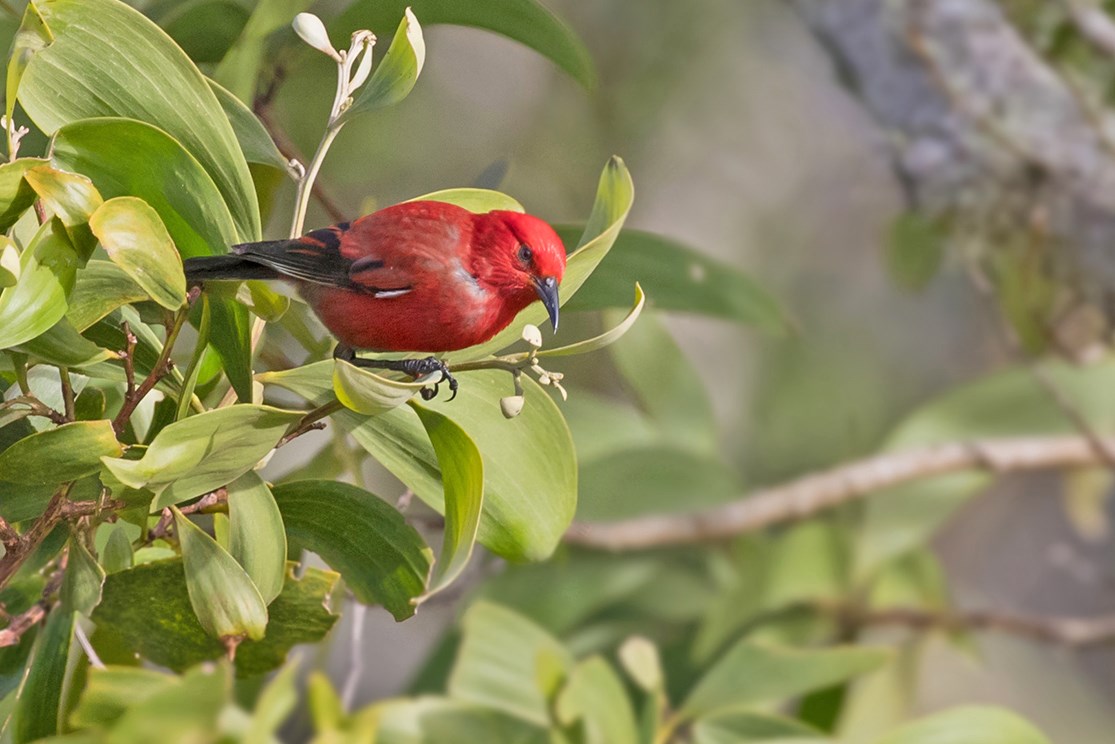Last updated: August 29, 2025
Article
Molokaʻi Bird Trends Tell a Cautionary Tale
A study of population trends from 1979 to 2021 gives clues on how to secure the future of native Hawaiian birds.
By the editorial staff of Park Science magazine
About this article

This article was originally published in the "Research Roundup" section of Park Science magazine, Volume 39, Number 2, Summer 2025 (August 29, 2025).

NPS / Janice Wei
Today, native bird communities across Hawaiʻi are mere shadows of their former selves. Plants and animals introduced from other parts of the world have devastated bird habitats. And introduced diseases like avian malaria, aided by warming temperatures, are further crippling species that have thus far escaped extinction. The situation is especially dire on the Hawaiian island of Molokaʻi. Understanding the bird population shifts there is key to boosting conservation locally and further afield.
New research published in March 2025 in The Wilson Journal of Ornithology analyzes bird data collected from Molokaʻi over 42 years. Biologists began the first landscape-scale forest bird survey on the island in 1979. They repeated the surveys six times, most recently in 2021. The study authors used modern statistical tools and techniques to estimate population sizes and trends for as many species as they could. The surveys found 17 non-native bird species and three native species.
The non-native, warbling white-eye was the most common bird in every survey by far. Two other non-native species populations were found to have substantially increased since 1979–1980. The fate of natives was another story: surveyors last saw the Olomaʻo, known only from Molokaʻi, in 1980, and no one has spotted the native ‘Iʻiwi since 2010. These results show that Hawaiʻi’s native birds remain extremely vulnerable. Habitat restoration, more monitoring, and mosquito control could help on Molokaʻi. Other places with similar challenges will need to do the same to avoid the fate of the native bird species in this study.
Smith and others. 2025. Population trends of native and non-native forest birds on the island of Molokaʻi, Hawaiʻi. The Wilson Journal of Ornithology, 137(1), 51–64.

